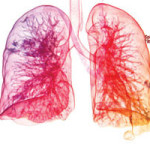Health Effects of Indoor Air Pollutants
 Health Effects of Indoor Air Pollutants
Health Effects of Indoor Air Pollutants
Indoor air contaminants within our homes and workplaces have the ability to produce a wide variety of mild to severe health related issues. Learning more about the health effects of indoor air pollutants can help us mitigate our risks and breathe safe. Here are a number of the more common indoor air pollutants and the health related illnesses and symptoms they have been known to produce:
Asbestos:
Asbestos exposure produces no immediate symptoms but long term exposure to asbestos containing materials that are damaged, disrupted or disturbed and releasing airborne asbestos fibers can include both abdominal cancers, lung diseases and lung cancers (mesothelioma being the most common). Long term smokers are most at risk of developing lung cancer as a result of asbestos exposure.
Lead:
Lead exposure can impact almost all systems within the body. At high levels, lead exposure may cause coma, convulsions and death. Lower levels of lead exposure can affect the blood cells, impair mental development, affect the kidney, central nervous system and stunt physical development.
Volatile Organic Compounds:
VOC off-gassing from chemicals typically used within the home (such as household cleaners, paint, and building materials) can cause eye, nose and throat irritations, nausea, headaches, dizziness, damage to the central nervous system, kidneys and liver. Some VOC (or organic chemicals) have even been known to cause cancer.
Radon:
The presence of radon in your air does not produce immediate or short term symptoms. Long term exposure is, however, the second leading cause of lung cancers. Those who smoke are at the highest risk.
Formaldehyde:
Formaldehyde exposure can produce severe allergic reactions, wheezing, coughing, dermatitis (skin rash), fatigue, and eye, nose and throat irritation. It is also reported to be a known carcinogen. Carbon Monoxide: High concentrations of carbon monoxide exposure can produce loss of co-ordination, dizziness, nausea, impaired vision, headaches, confusion, flu-like symptoms and death. Lower concentrations may produce fatigue in individuals with no health concerns, and chest pain and pressure in individuals suffering from heart disease.
Mold:
Airborne mold spores, and mycotoxins from mold, can produce a wide variety of health related symptoms and conditions such as asthma, allergies, emphysema, coughing, wheezing, sneezing, dizziness, rash, headache, fatigue, nausea, vomiting, lung hemorrhage, and difficulty breathing.
Particulates:
Particulates in your air; such as smoke, dust, fumes and fibers can produce eye, nose, and throat irritations, itchy and watery eyes, allergies, coughing, wheezing and respiratory issues. Second hand smoke is also one of the leading causes of lung cancer.
Combustion Byproducts:
Exposure to various combustion byproducts has been known to produce an increased risk for respiratory infections, bronchitis, lung cancer (environmental tobacco smoke), eye, nose and throat irritation and decreased lung functioning.
Pesticides:
Exposure to pesticides has been linked to an increase cancer risk, kidney and central nervous system damage, and eye, nose and throat irritation.
Minimizing your exposure to the pollutants noted above will minimize your health risk. Being aware of the health effects of indoor air pollutants and making an effort to keep exposure levels down within your home or office can help you breathe easier and safer. If exposure rates are unknown, or unclean, consider professional air quality testing to get informed.


Follow Us!